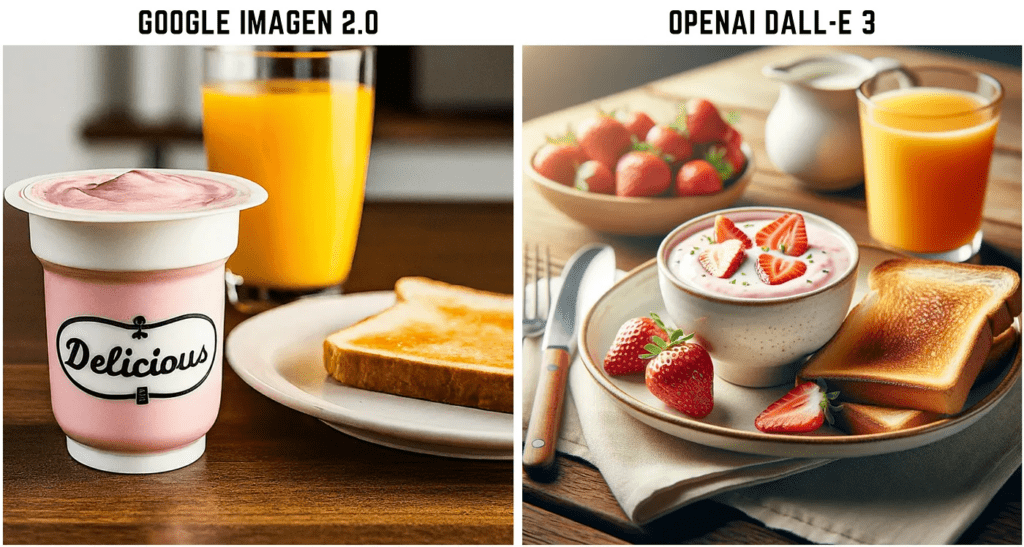What is DALL-E 3 ?
OpenAI’s DALL-E generative AI model is designed to generate images. The most recent release is the third version (DALL-E 3), having been initially introduced in January 2021. Prompts are inputs in plain language that the model uses to create visuals.
It is intended to produce images from textual descriptions and is an extension of the GPT-3 (Generative Pre-trained Transformer 3) architecture. The play on names, “DALL-E” is a reference to both the Pixar character WALL-E and the renowned artist Salvador Dalí.
Based on textual cues, DALL-E can produce visuals that are distinct and varied. Users can describe an image in their minds, and the model will produce an image that matches. It can, for instance, bring up visions of strange and inventive ideas such as “an avocado-shaped armchair” or “a two-story pink house shaped like a shoe.”
Unveiling DALL-E 3: A Leap into the Next Generation of AI Art
With its innovative models, OpenAI continues to push the envelope in the quickly changing field of artificial intelligence. DALL-E 3, an advancement over DALL-E, is the most recent marvel to come out of the research labs. We’ll explore the fascinating capabilities and opportunities that DALL-E 3 offers the field of AI-generated art in this blog article.
Understanding the Legacy: DALL-E’s Creative Capabilities
Let’s take a moment to review the accomplishments of DALL-E 1 before we set off on the adventure of DALL-E 3. We were first introduced to the world of generative art by DALL-E, which was able to create inventive and colorful visuals from textual cues. With scenes ranging from “a fire-breathing unicorn in a tutu” to “a futuristic cityscape made of jelly beans,” DALL-E demonstrated the extraordinary artistic possibilities of artificial intelligence.
What’s New in DALL-E 3?
1. Enhanced Creativity and Realism
With its increased realism and inventiveness, DALL-E 3 elevates generative art to new heights. The model’s capacity to comprehend complex cues and convert them into visually striking pictures has been considerably improved. As DALL-E 3 blurs the distinction between artificial and human innovation, get ready to be amazed.
2. Increased Resolution and Detail
A highly anticipated characteristic of DALL-E 3 is its capacity to produce images with never-before-seen levels of sharpness and detail. Bid farewell to pixelation, as this new version offers an unprecedented level of detail and clarity. Prepare to discover artistic realms where each brushstroke is a work of beauty.
3. Interactive Collaboration
Interactive collaboration is a revolutionary feature that is introduced in DALL-E 3. Now, users may interact with the model in real time, giving it feedback and coming up with original ideas on the spot. Artists, designers, and enthusiasts now have unprecedented opportunities to co-create with AI thanks to this collaborative method.
Google Imagen 2 VS OpenAI’s Dall-E 3 — Same Prompt, Different Results
Google Imagen 2
Using Google DeepMind technology, Imagen 2 offers a plethora of features that let developers produce images for their particular use case, along with noticeably better image quality. These features include the ability to generate aesthetically pleasing, high-resolution, photorealistic images from natural language prompts.
Prompt #1
Small canvas oil painting of an orange on a chopping board. Light is passing through orange segments, casting an orange light across part of the chopping board. There is a blue and white cloth in the background. Caustics, bounce light, expressive brush strokes

The soft tones on the left image give it a photorealism effect. But Dall-E 3 made a more accurate representation of the blue and white cloth in the background.
Prompt #2
A cup of strawberry yogurt with the word “Delicious” written on the side, sitting on a wooden tabletop. Next to the cup of yogurt is a plate with toast and a glass of orange juice.

The sample fails to include the “Delicious” feature on the yogurt cup that is given in the prompt, exposing inconsistent text producing capabilities in Dall-E 3. Here, Imagen 2 worked with accuracy.
Prompt #3
A tube of toothpaste with the words “CYMBAL” written on it, on a bathroom counter, advertisement.

Similar to the preceding text sample, Imagen 2 performs accurately while Dall-E 3 curiously has trouble entering the proper “CYMBAL” branding. This implies that Dall-E 3’s text generating skills are inconsistent.
Applications Beyond Art: DALL-E 3 in the Real World
Even though DALL-E 3 has astounding creative qualities, its influence goes beyond the art world. The approach finds use in a variety of industries, including virtual world development, narrative, and graphic design and advertising. DALL-E 3 is poised to transform the way we think and see concepts as it learns and adapts over time.
The Ethical Landscape: Navigating Challenges
The introduction of DALL-E 3 presents ethical questions, as it does with every technical development. Copyright, authenticity, and AI’s place in creative processes are among the issues raised. OpenAI is still dedicated to resolving these issues and promoting a discussion on the proper application of AI.
A Glimpse into the Future
The field of AI-generated art has advanced significantly with DALL-E 3. A future where human and machine creativity converge is made possible by its improved capabilities, interactive features, and practical applications. The boundaries between the imagined and the created are becoming increasingly hazy as we watch this technological marvel come to life, and the possibilities appear limitless.








